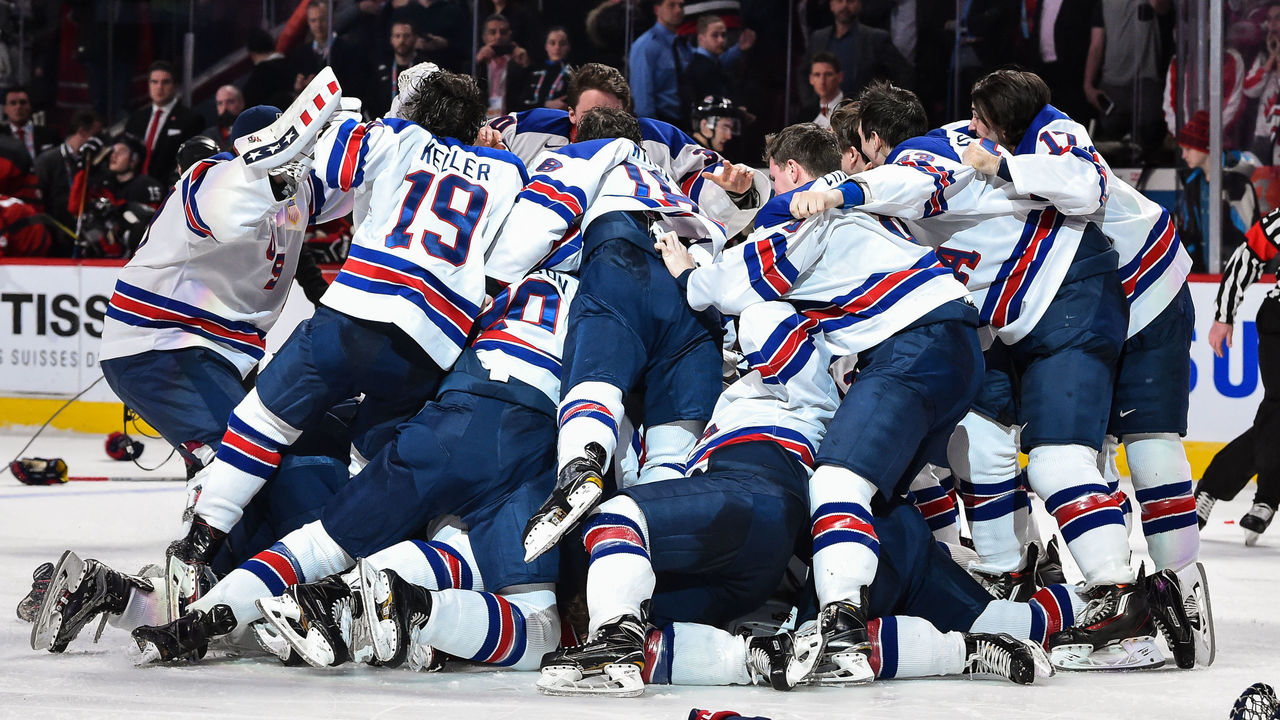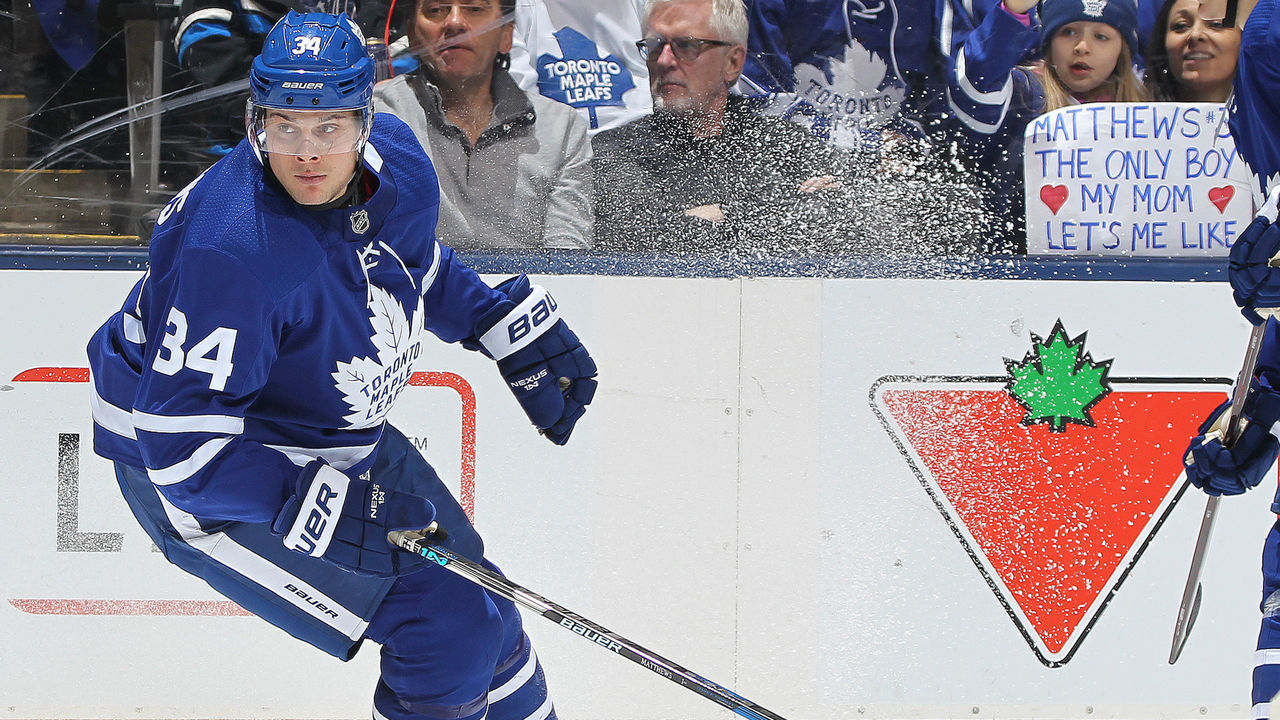Is Canada losing its grip on NHL draft dominance?
There are two certainties heading into the NHL draft Friday night in Dallas.
The first is that Swedish defenceman Rasmus Dahlin will be selected first overall. The second is that a Canadian-born player likely won’t hear his name called until at least the fifth overall selection. The first Canadian player taken is expected to be either one of two defencemen: Evan Bouchard of the London Knights, or Noah Dobson of the Acadie-Bathurst Titan.
If the consensus holds true, it will mark the longest wait for a Canadian player to go off the board in 19 years. And it comes at a time when more American and Swedish-born players have been taken, particularly high in the opening round, over the past few years. The current cycle is reminiscent of a trend between 1999 and 2001 before Canadian players began to numerically dominate again.
“Drafts are, by nature, cyclical,” said Red Line Report chief scout Kyle Woodlief. “When you have to start to adjust your thinking is when cycles become a trend.”
Woodlief, a native Montrealer who now lives and operates his independent scouting newsletter out of Lake Placid, N.Y., was clear that he sees no serious issues with Canadian hockey that have negatively impacted the draft position of the country’s players.
Woodlief said the expected results this weekend in Dallas are simply a reflection of Dahlin being an exceptional talent along with Russian Andrei Svechnikov, Czech Filip Zadina, and a couple of Americans led by Brady Tkachuk.
Another factor is that the overall quality of this year’s draft is thought to be average at best. Other countries, particularly the U.S., are challenging Canada’s numerical dominance, but it’s also happening during a year when the whole exercise is not expected to produce a highly talented crop of future NHL stars, or even stalwarts.
“Overall, Canada doesn’t have a Connor McDavid, or a Steven Stamkos, that we started to get used to for awhile,” said Woodlief. “But overall, there is still going to be a lot of Canadian players drafted all through the draft. But really, the draft is really just an average crop this year.”
Hockeyprospect.com chief scout Mark Edwards has watched Americans churn out more players, and points out that the current cycle has another year to run.

“There is no doubt that Americans are producing more players, and the team they have coming from their (U-18 program) next year is going to be even better,” said Edwards, in reference to the 2019 draft class topped by American whiz kid Jack Hughes. “It’s just been a down year for the (Canadian junior leagues).”
Canada has had 12 players selected in the first round each of the past three years, a number that is down from 14 (2012), 18 (2013), and 14 (2014) in the previous three drafts. By comparison, working backward since last year, the Americans have had five, 11, and seven selected in the first round. The Swedes had four first-rounders last year in New Jersey, and four more in the opening rounds between 2016 (one) and 2015 (three). Finland, after some down years, has also produced several first-round picks since 2015, and Jesperi Kotkaniemi could poke ahead of any Canadian taken Friday night.
Parsing the numbers at the top-end further, this year’s draft in Dallas is shaping up to be somewhat like Buffalo two years ago, when players from five different countries were selected in the opening round, highlighted by American Auston Matthews at No. 1. Pierre-Luc Dubois, who finished eighth in the Calder Trophy balloting with the Columbus Blue Jackets, was the first Canadian player taken at No. 3.
Assessing overall drafted players can be a mugs’ game, as less than half ever play in the NHL, but in terms of overall players selected since 2012, Canadians have peaked at 100 (both 2012 and 13), while leveling off in the 80s since. During the same span, the U.S. had as many as 64 players taken (2014), to as few as 47 (2017).
Here's the upshot of all the numbers and anecdotal analysis: Canada still produces the most players at virtually every discernable level - first-rounders, overall players drafted, and players cracking NHL rosters in their early-20s, but the Americans are closing the gap - and some would say rapidly.
Consider this point: when the World Cup of Hockey was played two years ago in Toronto, the Young Stars (Under-23) team had more American-born players on it than Canadians, though that number was effectively evened out by Sean Couturier, who was born in the U.S. but considers himself to be Canadian after moving back “home” as a young kid.
Beyond that, an across-the-board Under-23 list now would likely have just as many American names on it (and perhaps more) and quite a few Swedes and Finns, too.
Woodlief, along with a handful of other NHL-connected people consulted over the past six weeks, say the Americans have simply woken up to the presence of hockey being played in all corners of their country.
This type of organic growth will be on display at the draft in Dallas Friday night.

“I think what you’re seeing is the population monster at work,” said Woodlief. “When you have 330 million people and the game is played in so many different markets, you’re going to see participation numbers (spike) … I think that was (evident) with Matthews two years ago.”
Woodlief is referring to Matthews developing into a generational talent in the desert climate of Arizona while growing up in the Phoenix area. In addition, it is now common to see American players born in Florida, California, and Texas getting drafted and eventually appearing on NHL rosters.
If there is some disquiet from a Canadian perspective, it’s that elite hockey development has narrowed the gap. A former NHL executive speaking on background said the evolution of the game has turned into a year-round pursuit, and that developing young hockey players has now become an elite sport. It requires immense financial and time commitment from the parents of young players to put their kids into elite programs, a fact of life for American families for decades.
“We are now competing with Americans on level ground,” said the executive, who has had a hand in running two different NHL clubs. “Americans have always had to spend huge money to keep their kids in hockey, now we run programs all year round (in much the same way). You’ll never win that battle because the U.S. will eventually out-resource you.”
Edwards, whose background includes coaching in the Greater Toronto Hockey League, says that Canada could also do well to keep an eye on Sweden and Finland.
“I think you need to ask yourself, how come (Sweden) and the Finns are producing these guys as well … what is it they are doing that Canada isn’t?”
(Photos courtesy: Getty Images)